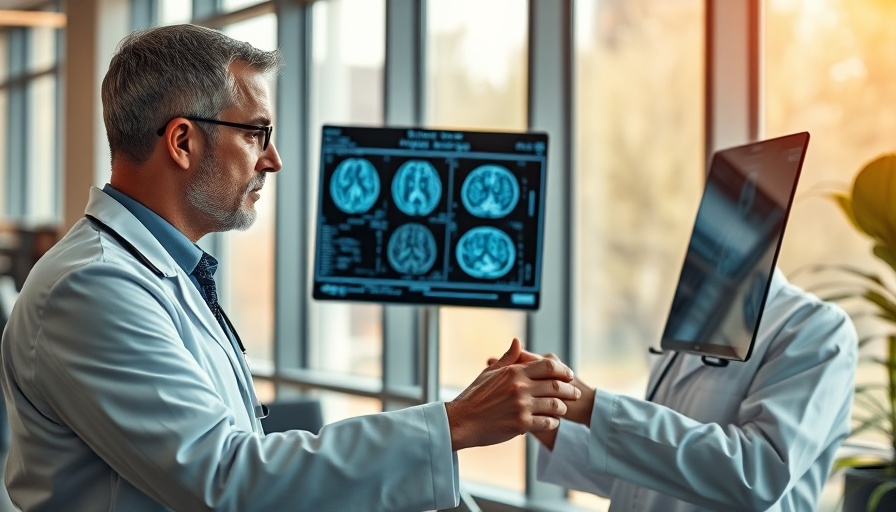
Understanding Dystonia: What You Need to Know
Dystonia is a complex neurological disorder characterized by involuntary muscle contractions, causing abnormal postures or movements. Symptoms can vary widely, leading to frequent misdiagnoses—including conditions like cerebral palsy—especially in children. In fact, reports indicate that up to 300,000 people in the United States may have Dystonia, with an alarming number of cases going undiagnosed.
Common Symptoms and Misdiagnosis
Those with Dystonia often experience a range of symptoms, from uncontrollable blinking and eyelid stiffness to muscle spasms that can significantly hinder daily activities. Joe Beery, a father whose twins suffer from Dopa Responsive Dystonia, shared his family's struggle for a correct diagnosis over five long years. His twins were initially misdiagnosed, only to be accurately diagnosed after extensive testing. They began treatment with L-Dopa, a medication that can allow some patients to live symptom-free. What sets Dopa Responsive Dystonia apart from similar disorders is a discernible increase in functionality early in the day, with symptoms worsening as the day progresses.
Revolutionary Diagnostic Tools: The Future of Dystonia Identification
Fortunately, advancements in medical technology are paving the way for better diagnosis. Researchers at Harvard Medical School and Massachusetts Eye and Ear have developed a new deep learning platform called DystoniaNet. This innovative tool processes MRI data to objectively diagnose Dystonia with an impressive 98.9% accuracy. By focusing on microstructural details often missed in standard imaging, DystoniaNet could significantly improve diagnostic outcomes for patients, ensuring timely and accurate treatment.
The Importance of Accurate Diagnosis
Getting an accurate diagnosis is essential not just for treatment but also for understanding the underlying causes of the disorder. Misdiagnosing Dystonia can lead to ineffective treatment plans and increased patient distress. Earlier identification through advanced tools like DystoniaNet can provide clinicians with crucial insights into the condition, ensuring that families receive appropriate support and care. For patients suffering from Dystonia, having access to early diagnosis and appropriate treatment options is not merely a matter of improved health; it can foster immense relief and hope.
What Lies Ahead: Future Predictions for Dystonia Treatment
As artificial intelligence continues to influence the medical field, the prospect of early diagnosis and individualized treatment is becoming more achievable. The emergence of DystoniaNet exemplifies how technology can enhance our understanding of neurological disorders, potentially allowing for personalized treatment plans based on individual needs. Furthermore, as awareness increases, we can anticipate a rise in support networks that help educated patients and families navigate this often-misunderstood condition.
Common Misconceptions About Dystonia
One prevalent misconception about Dystonia is that it is a rare condition. While it may not be as widely discussed as other neurological disorders, thousands are affected by various forms of Dystonia. Furthermore, the notion that Dystonia only presents in certain demographics is misleading; it affects individuals regardless of age, sex, or background.
As we continue to shine a light on Dystonia through research and medication, educational efforts are key in dispelling myths and fostering empathy toward those managing this disorder.
Take Action: Advocacy and Support for Those Affected
For educators and community leaders, raising awareness about Dystonia can help promote understanding and support for affected individuals and their families. Simple actions—such as sharing articles, providing resources, and discussing the disorder in educational settings—can create a more inclusive environment for those impacted by Dystonia. Together, we can dismantle stigma and champion informed conversations around health conditions like Dystonia.
By educating ourselves and others, we not only create a supportive network for those affected by Dystonia but also foster an informed community where everyone feels seen and heard. If you believe you or someone you know may be experiencing symptoms of Dystonia, don’t hesitate to seek professional help. Awareness is the first step towards understanding and recovery!
 Add Row
Add Row  Add
Add 




 Add Row
Add Row  Add
Add 

Write A Comment